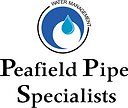In the intricate world of construction, ensuring the structural integrity of a building is paramount. One of the key methods used to guarantee this integrity is hydrostatic pressure testing. This critical process plays a pivotal role in construction projects of all sizes, from towering skyscrapers to humble residential homes. In this article, we will delve into the importance of hydrostatic pressure testing in construction and how it contributes to the safety, durability, and quality of buildings.
The Science Behind Hydrostatic Pressure Testing
Hydrostatic pressure testing is a method used to evaluate the strength and watertightness of a structure by subjecting it to fluid pressure. Typically, this involves filling the structure, such as pipes, tanks, or vessels, with water or another liquid to simulate the conditions it will encounter in actual use. The pressure is gradually increased to predetermined levels, and the structure is closely monitored for any signs of leakage, deformation, or failure.
Detecting Weaknesses and Vulnerabilities
One of the primary goals of hydrostatic pressure testing is to identify weaknesses and vulnerabilities in a construction project before it is put into operation. This proactive approach helps prevent costly repairs and potential disasters down the road. By applying controlled pressure to the structure, any flaws or defects in the materials or workmanship become evident, allowing for corrections to be made early in the construction process.
Ensuring Structural Integrity
Safety should always be the foremost concern in construction. Hydrostatic pressure testing is instrumental in ensuring that a building can withstand the forces it will face during its lifespan. Imagine the catastrophic consequences of a water tank rupture or a pipeline failure in a densely populated area. By subjecting these structures to rigorous pressure tests, we reduce the risk of such disasters and, in turn, protect lives and property.
Compliance with Building Codes and Regulations
Building codes and regulations are in place to ensure that construction projects meet specific safety standards. Many of these codes require hydrostatic pressure testing for critical components like plumbing systems, gas lines, and fire suppression systems. Complying with these standards is not just a legal requirement; it is an ethical obligation to safeguard the well-being of occupants and the community at large.
Enhancing Durability and Longevity
Construction is a significant investment, and property owners expect their buildings to stand the test of time. Hydrostatic pressure testing helps in achieving this longevity by identifying potential weaknesses that could lead to premature deterioration. By addressing these issues early, builders and developers can ensure that the structures they create will serve their intended purpose for many years to come.
Preventing Costly Repairs and Downtime
Construction defects can be expensive to rectify, not to mention the disruptions they cause. Hydrostatic pressure testing reduces the risk of such defects by revealing issues during the construction phase rather than after occupancy. This proactive approach saves both time and money, as repairs can be made before the building is handed over to its occupants.
Quality Assurance: Meeting High Standards
Clients have high expectations when it comes to the quality of their construction projects. Hydrostatic pressure testing is a powerful tool for builders and contractors to demonstrate their commitment to delivering a high-quality product. It provides clients with peace of mind, knowing that their investment is built to last and meets the highest industry standards.
Building a Reputation for Excellence
A reputation for excellence is invaluable in the construction industry. Projects that undergo hydrostatic pressure testing and pass with flying colors are a testament to a builder’s commitment to quality and safety. This not only satisfies current clients but also attracts new ones, fostering long-term success in a competitive market.
Conclusion
In conclusion, hydrostatic pressure testing is an indispensable component of modern construction. It serves as a critical quality control measure, ensuring the safety, durability, and integrity of buildings and infrastructure projects. By subjecting structures to controlled pressure, we can identify weaknesses, prevent disasters, and enhance the overall quality of construction. In a world where safety and quality are non-negotiable, hydrostatic pressure testing stands as a steadfast guardian of the structures we build, ensuring they stand strong for generations to come. As the construction industry continues to evolve, this time-tested technique remains as vital as ever.
